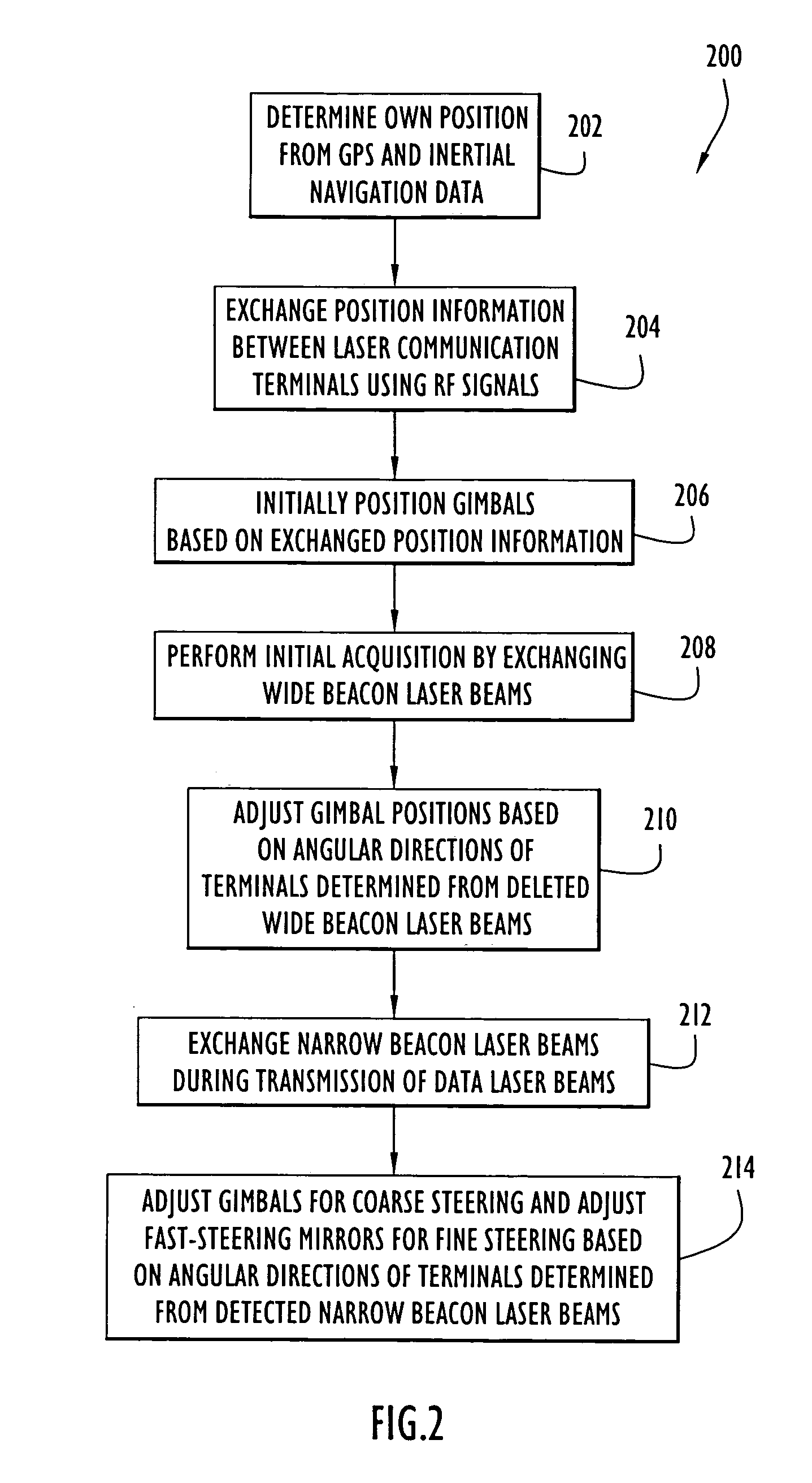Acquisition, pointing, and tracking architecture for laser communication
a laser communication and acquisition technology, applied in the field of acquisition, pointing, and tracking schemes, can solve the problems of reducing the maximum operating range of the system, reducing the signal power at the receiver, and difficult initial acquisition of a remote terminal, so as to reduce the sensitivity to solar radiation and glint.
- Summary
- Abstract
- Description
- Claims
- Application Information
AI Technical Summary
Benefits of technology
Problems solved by technology
Method used
Image
Examples
Embodiment Construction
[0017] The following detailed explanations of FIGS. 1-4 and of the preferred embodiments reveal the methods and apparatus of the present invention. FIG. 1 illustrates the system architecture for a laser communication terminal 100 employing an acquisition, pointing, and tracking scheme according to an exemplary embodiment of the present invention. The architecture depicted in FIG. 1 is a conceptual diagram illustrating major functional units, and does not necessarily illustrate physical relationships.
[0018] Laser communication terminal 100 is designed to operate in a laser communication system with moving platforms, where the relative positions of terminals change over time. The system can include, for example, terminals mounted on airborne platforms, satellites, ships, watercraft, or ground vehicles, as well as stationary terminals that communicate with terminals mounted on moving platforms (e.g., combinations of air-to-air and air-to-ground links). The system can include any numbe...
PUM
 Login to View More
Login to View More Abstract
Description
Claims
Application Information
 Login to View More
Login to View More - R&D
- Intellectual Property
- Life Sciences
- Materials
- Tech Scout
- Unparalleled Data Quality
- Higher Quality Content
- 60% Fewer Hallucinations
Browse by: Latest US Patents, China's latest patents, Technical Efficacy Thesaurus, Application Domain, Technology Topic, Popular Technical Reports.
© 2025 PatSnap. All rights reserved.Legal|Privacy policy|Modern Slavery Act Transparency Statement|Sitemap|About US| Contact US: help@patsnap.com



